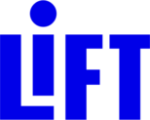The room was buzzing the morning of July 11, 2017 as the Bank of America Student Leaders Summit kicked off with our fifth hosting of LIFTopolis, a one-of-a-kind role playing simulation of the social services system. The summit brings together over 200 high school juniors and seniors from across the country to learn about employment, skills, development and service from Bank of America and also teaches students about making Better Money Habits with financial literacy and planning.
After being introduced by the Bank of America Charitable Foundation’s Senior Vice President and National Philanthropy Manager (and longtime LIFT supporter!) Stephanie Lomibao, LIFT Co- Founder and CEO Kirsten Lodal took the stage to tell LIFT’s story and the importance of empathy. She spoke to the challenges low-income families face and how understanding has the power to fuel solutions-what LIFTopolis all about. As she put it, “LIFTopolis is about empathy. Putting yourself in someone else’s shoes & connecting to the experiences that others face.” Afterward, LIFT-DC Executive Director Kristy Arnold invited students into the city of LIFTopolis and gave an overview of how the simulation would operate. Once they stepped into their new identities – based on the real-life circumstances and experiences of the parents LIFT serves – LIFTopolis began!

Student Leaders were given background information about their new identity, including the size of their family and their budget, as well as a list of goals to complete. During LIFTopolis, students had four 12-minute “days” to visit service providers, and three three-minute “nights” to plan and strategize for the next day. It didn’t take long before students realized that securing childcare, employment and housing required multiple visits to social service agencies and more time than they had in each day. To reach their goals and make ends meet for their families, students used their ‘Better Money Habits’ to gain extra funds and even camped outside of different service providers to be sure they were first in line. But tensions mounted as each day ended, resulting in protests at the Department of Motor Vehicles and the LIFTopolis Housing Authority. And by the fourth day of waiting in never-ending lines, facing one barrier after the next, the Student Leaders were frustrated and confused by the complexity of the system.

Following the simulation, Kristy tied the students’ experiences to LIFT’s mission of empowering families to break the cycle of poverty. She surveyed the room to gauge a sense of students’ feelings and the frustrations they encountered in LIFTopolis. With hands raised, students expressed feelings of hopelessness and an inability to reach their goals while in LIFTopolis. Then, Kristy gave the students a pop quiz to see just how much they knew about poverty in America. She highlighted statistics including the 13.5% of Americans living below the poverty line (which equals just under $24,600 per year for a family of four), as well as the 43% of American children living in poor and low-income households. As the numbers were revealed and students grasped a greater understanding of how many people are affected by poverty and surprised reactions began to filter about the room.

When LIFTopolis debriefs began, the students reflected on their own experiences. In most groups, no one accomplished their goals and as general sentiments of exasperation at the system’s inefficiency surfaced, emotions spilled over at the thought of despair many parents feel as they tried to make ends meet for their families.
One Student Leader reflected, “These aren’t fictional situations. For some of these families, these circumstances are a matter of being able to live and just be okay.”
Another agreed and stated, “It’s easy to see how people can get trapped in this cycle. With basic services so difficult to obtain, you can quickly lose hope.”
Luckily, the Student Leaders were able to apply their newfound understanding to brainstorm solutions to better the social service system. Two representatives from each table presented their group’s “Big Ideas” to their peers on stage. With enthusiasm, students outlined solutions including better training for customer service providers, enacting mandatory financial literacy courses in schools and even websites to bring social service systems into the digital age. Their presentations were filled with innovation – from kiosks, apps and websites, to exciting partnerships between schools, businesses and community nonprofits.

LIFTopolis is a powerful example of how understanding has the power to fuel new solutions. By raising up the voices that too often go unheard and bringing awareness to issues facing low-income families, we all can inspire action and be a part of the change to create better lives for everyone.
Thanks again to our friends at Bank of America for providing LIFT the opportunity to engage with the Student Leaders and for their continued to support of our mission to empower families to break the cycle of poverty.
Follow Bank of America on Twitter.
For more photos from this LIFTopolis check out our Flickr album.
